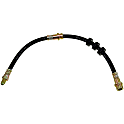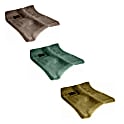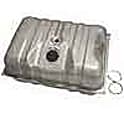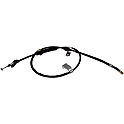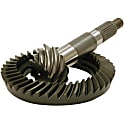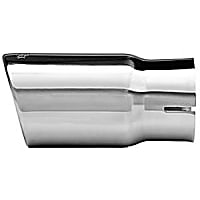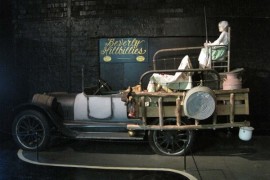{
"lazyNodes": false,
"abFitnotesFlag": false,
"abCrawlReviews": false,
"productOptionsCookie": false,
"orderDelayFlag": false,
"skipSessionCookie": false,
"covidMessage": false,
"fullTitleCookie": false,
"nrLoggerCookie": false,
"checkoutReviewCookie": false,
"productOptionSeqCookie": false,
"maintenanceFlag": false,
"bufferETACookie": false,
"multiShippingDiscountFlag": false,
"newFitmentFlag": false,
"surveyOptInFlag": false,
"crossSellFlag": false,
"skuMappingFlag": false,
"paySplitCookie": false,
"callDisableFlag": false,
"zipPaymentFlag": "u",
"hassleFreeReturn": false,
"lifetimeReplacement": false,
"cpn_off": false
}
Oldsmobile Cutlass Parts & Accessories
Find the right parts faster- Home
- Oldsmobile
- Cutlass
Select Your Vehicle Part
Top Rated Products
Popular Products
Product Questions & Answers
Shopping for Oldsmobile Cutlass Parts
Does being manufactured by one of the oldest car companies in America make the Oldsmobile Cutlass a goodie?
After Ransom E. Olds founded Oldsmobile in 1897, General Motors produced the Oldsmobile brand of automobiles for most of its existence. In the 107 years of its existence, the company produced 35.2 million cars, including 14 million (minimum) built at its Lansing, Michigan factory. Eventually becoming one of the most popular automobile brands in the 1970s, the Cutlass name was used by Oldsmobile almost as a sub-marquee because the car embodied the company's vision and core values. The Oldsmobile Cutlass became America's bestselling car in 1976.
When did things turn for the worse for Oldsmobile Cutlass?
Once the 90s rolled around, Oldsmobile found itself in a bit of trouble. As other divisions of GM became successful, Oldsmobile lost its identity as well as its place on the market and was forced to market rebadged General Motorcars. As time passed, Oldsmobile became a bastion for testing new concepts for GM, sort of like a concept car factory. As the 21st century dawned, all the older models had to be shelved one by one and replaced with sleeker, more aerodynamic ones. But despite their efforts to revive Oldsmobile, the marquee's demise would finally come because of profit losses of its parent company GM. This meant that the Oldsmobile brand would cease to exist, marking an end of an era that witnessed six generations of Cutlass automobiles.
Why does my Oldsmobile Cutlass overheat more than usual? Why does my car's HVAC motor seem weaker while the car's running?
Coolant may be leaking from the water pump. The water pump, also referred to as the coolant pump, sends coolant through the engine's cooling system. The engine may overheat as a result of the coolant loss. A leaking water pump should be replaced immediately.
The vehicle's HVAC blower motor may stop working at one or more speeds because of a malfunctioningblower motor resistor block. The heating, ventilation, and air conditioning (HVAC) system's role is to keep your vehicle's interior cool on hot days and warm in the winter. Experts recommend confirming the resistor is not working by first checking the operation of the switch.
Am I the only one experiencing fluid leaks from my car's power steering hose?
You aren't the only one. The power steering hose will commonly leak fluid, so it should be replaced. The power steering pressure hose carries the power steering fluid (under high pressure) from the power steering pump to the steering gear. Experts recommend using factory power steering hose replacement parts because they fit exactly and may last longer than third-party or aftermarket hoses.
My engine starts and stalls often. Does the security system have anything to do with this?
If the security light is flashing, you are correct. This is often due to a malfunctioning passlock sensor which is a component of the ignition lock cylinder. A secondary cause could be the ignition switch itself. Corroded contacts inthe ignition switch can cause voltage drop issues that affect the passlock system. Proper diagnoses should be performed before replacing any parts.
What started out as a budget-friendly, small A-body vehicle is now an iconic American ride from General Motors. Its origins can be traced back to the first Cutlass, an experimental sporty coupe designed in 1954 but was never released for public use. Seven years later, the first official Cutlass was introduced in 1961. Throughout the years, this vehicle received several upgrades. And after thirty-eight years and several generations, the Cutlass has evolved into a class of its own. The last model rolled off the assembly line in 1999, ending the production of one of the most well-known vehicles by GM.
1961-1963: First generation
Also known as F-85, the first-gen Cutlass was available in two models—a sedan and a station wagon—and in two trims—base and deluxe. A sports coupe was also introduced, which featured an optional center console, bucket seats, and a four-barrel V8. In 1962, the Jetfire was introduced. This hardtop included a Garrett turbocharged 215 V8, a stylish trim, and a vacuum gauge. The following year, the F-85 was restyled: the overall length increased and additional seats in the station wagon were removed. This led to an increase in overall sales.
1964-1967: Second generation
Changes included a new body-on-frame chassis, a longer wheelbase, and a heavier overall weight. The Roto Hydramatic and aluminum V8 were replaced with Jetaway automatic transmission and a cast-iron, small block V8, respectively. New models such as the Vista Cruiser and the 442 were also introduced. In 1967, the Jetaway transmission was supplemented with a three-speed Turbo-Hydramatic and optional disc brakes, and a new model, the Turnpike Cruiser, was released.
1968-1972: Third generation
The third-gen Cutlass was given a major style overhaul. To accommodate the changes, the two-door and four-door versions were now made with different wheelbase lengths. In 1969, the ignition switch was relocated to the steering column, and the headrests became standard equipment. In the following years, several style changes were made, and the company discontinued the use of the F-85 nameplate.
1973-1977: Fourth generation
The next generation of Cutlass featured more upgrades and style changes. In 1974, smaller engines were offered to cater to budget-conscious buyers in response to the 1973-1974 energy crisis. The style changes, reliable performance, and engine options made Cutlass America’s Best-selling car in 1976 and for many years into the eighties.
1978-1981: Fifth generation
In the aftermath of an oil crisis, the Cutlass was downsized to accommodate a shorter and lighter wheelbase. Style upgrades included redesigned headlights and grilles. New models were also introduced: Calais, Supreme, 442, Cruiser, and Salon.
1982-1997: The Cutlass Family
The Cutlass nameplate was expanded into a sub-marque that included the following vehicle lines: Ciera, Supreme, and Calais.
1997-1999: Sixth generation
The sixth-gen Cutlass was basically an upscale version of the fifth-gen Chevrolet Malibu. Standard features were a front fascia with a split grille, a V6 engine, and red tail lights. Optional leather seats and chrome wheels were also offered. The last Cutlass was released in 1999.








